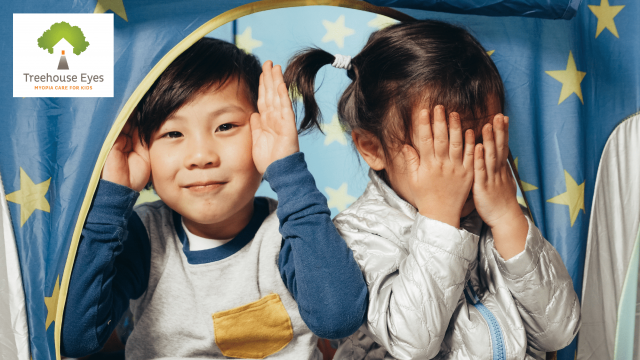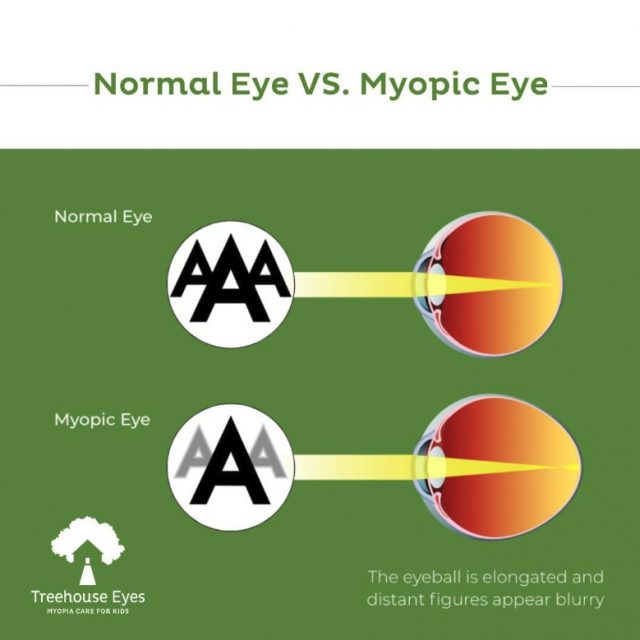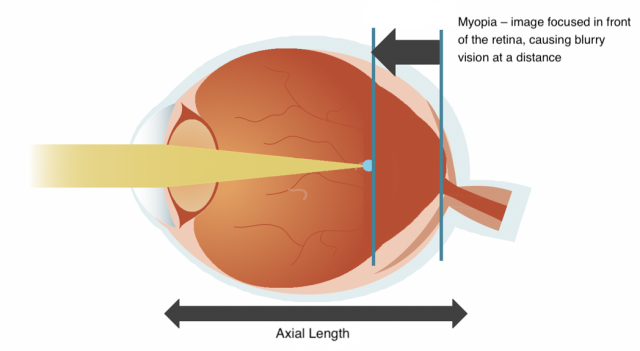Myopia (nearsightedness): A Pervasive Disease
Myopia is a disease that currently impacts 30% of the world’s population and by 2050, almost 50% of the population will be myopic, that’s an unnerving 5 billion people. There is some debate about whether myopia is a disease or a refractive error. The answer is uncovered by how myopia is defined and measured.

What Is The Definition Of A Disease?
The Review of Myopia Management provides a few definitions of disease to consider:
- A disease is any harmful deviation from the normal structural or functional state of an organism, generally associated with certain signs and symptoms and differing in nature from physical injury. (Encyclopedia Britannica, 2020)
- A disease is an abnormal condition affecting a living organism. Diseases are generally understood to be medical conditions that involve a pathological process associated with a specific set of symptoms. (Infectious Disease News, 2019)
Myopia, also called nearsightedness or shortsightness, is the inability to see objects at a distance and is the most common vision issue amongst children and adults. Myopia’s main symptom is blurry distance vision; however, the physiological implications of myopia is that the eyeball itself grows too long from front to back, see figure 1 below.

Is Myopia Curable?
The question of whether or not myopia is curable helps illustrate why myopia is a disease. Treehouse Eyes doctor, Dr. Thanh Mai, O.D. addresses the common question, “Can myopia be cured?” Myopia is not curable, but it can be treated. “Unfortunately, once myopia happens, which happens due to the eyeball growing too long, it is impossible to shrink it afterwards. When myopia occurs, it is permanent and irreversible.”
Dr. Mai then goes on to explain the importance of early intervention, “We can prevent high levels of myopia which are associated with diseases such as macular maculopathy and retinal detachment. Starting treatment early is critical because there is no cure for myopia and once a child is diagnosed with this disease, it typically gets worse if left untreated.”
Myopia is a disease that can be treated at the source by providing children with treatment options, rather than just giving a child glasses for the symptom of myopia which is blurry vision.
Myopia Is a Disease
Although myopia has symptoms like blurry vision, that aren’t caused by physical injury, myopia itself is caused by the eye growing too long. In other words, the axial length increases outside of the normal rate for a child’s age. See Figure 2 below.

The elongation of the eye is the core issue. Dr. Thanh Mai, O.D. details, “The greater the myopia, the longer the axial length of the eye and thus greater risk. Myopia is clearly a disease. One that requires treatment to reduce the negative impact it can have on a person’s eye health and vision.”
Myopia is a significant, prevalent disease in children with increasing rates of progression. There are also two types of classifications: non-pathologic and pathologic myopia.
How is Myopia Treated?
Treehouse Eyes offer customized contact lenses and special prescription eye drops, and our doctors develop personalized treatment plans for each child. We will be able to determine which treatment plan works the best for your child at the first consultation with your Treehouse Eyes doctor. Schedule a consultation now to find out more.
Additional Resources:
